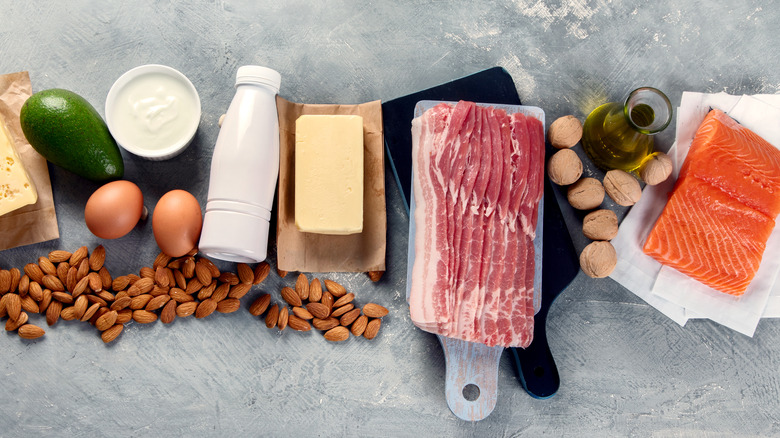What's The Difference Between Saturated Fat And Trans Fat?
Fats seemed much simpler back in the 80s. Back then, fat was thought to be bad, plain and simple. We've since learned that some fats, like omega-3s, are actually good for you. As explained by the National Institutes of Health, eating omega-3 rich seafood once a week may lower a person's risk of heart disease. This habit may also reduce rheumatoid arthritis symptoms, and ongoing research is investigating its impact on brain and eye health.
The old advice to avoid all fat clearly falls short of the science, but that doesn't mean that all fat is good, either. Two specific kinds are actively harmful to a person's health. Known commonly as trans fat and saturated fat, these two are common in many diets around the world. While many people are told to avoid them, few are told exactly what they are or how they differ. This knowledge can make all the difference to someone who is trying to adjust their daily diet, and it's important for anyone trying to improve their health.
Understanding saturated fats vs. trans fats
Canada's CTV published an article in 2015, outlining the differences between saturated and trans fats, even going so far as to give examples of their sources. Saturated fats typically come from animal sources. When food gets cold and forms a visible portion of fat, that fat is likely saturated. It is commonly found in high-fat cuts of meat or cheese, full-cream dairy, such as milk or ice cream, and palm or coconut oils. The American Heart Association says that saturated fat can increase a person's bad cholesterol. A healthy diet, according to the association, should have no more than 5-6% of its calories coming from saturated fat.
Trans fats are made when hydrogen is added to vegetable oil. Some trans fat does occur naturally in the same foods that contain saturated fat. The U.S. Food and Drug Administration has been working to eliminate trans fats from processed foods for years. While both types of fat can increase a person's bad cholesterol, trans fat is largely artificially created, resulting in a severe impact on the human body.


